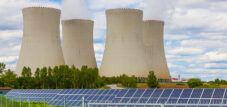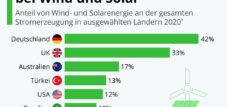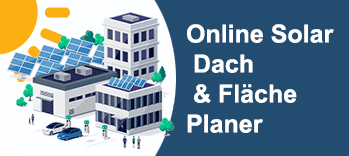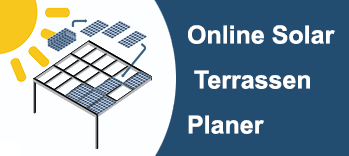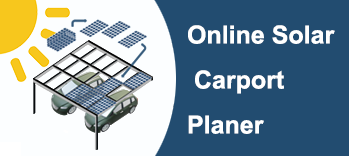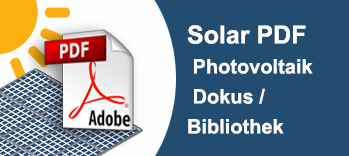More than half is solar: 33.3 GW – The USA is building 64 GW of new power plants – and breaking with its past
Xpert pre-release
Language selection 📢
Published on: September 2, 2025 / Updated on: September 2, 2025 – Author: Konrad Wolfenstein

More than half is solar: 33.3 GW – The USA is building 64 GW of new power plants – and breaking with its past – Creative image: Xpert.Digital
Trump's coal push fails: Why America's energy market simply ignores him
### Blackout averted: How simple home storage suddenly saved the American power grid ### It's not politics, it's money that decides: The real reason for America's explosive solar boom ### The quiet revolution: How Texas is transforming from an oil state to a global solar superpower ### The end of the coal era? These figures prove the unstoppable triumph of renewables in the USA ###
Texas' quiet revolution: From oil state to global solar superpower – how renewables are ending the coal era in the USA
While political rhetoric in Washington under President Trump loudly promotes a renaissance of fossil fuels, the American energy market in 2025 paints a completely different and unmistakable picture. A profound transformation is underway, driven not by political ideology, but by fundamental market mechanisms and economic common sense. The latest data from the US Energy Information Administration impressively demonstrates this change: Of the 64 gigawatts (GW) of newly planned power plant capacity, over half (33.3 GW) will be photovoltaics. This solar boom is complemented by explosive growth in battery storage (18.3 GW), while not a single new installation is planned for coal or nuclear power.
Surprisingly, the traditional oil-producing state of Texas is leading this revolution, emerging as the undisputed champion of the American energy transition with over 20 GW of installed solar capacity. At the same time, coal-fired power is experiencing a historic decline, with planned shutdowns of over 8 GW this year alone. This development demonstrates that the American energy transition has become an economic reality that can no longer be halted even by political turmoil – driven by falling costs, rising demand from large corporations, and the technological maturity of solar and storage solutions.
How will the American energy market develop in 2025?
The US energy market will undergo a historic transformation in 2025. While President Trump's political rhetoric promotes fossil fuels, the market speaks a completely different language. According to current data from the US Energy Information Administration, a total of 64 gigawatts of new utility-scale capacity is expected in 2025, with renewables demonstrating absolute dominance.
Of these 64 GW, 33.3 GW will be photovoltaics, accounting for more than half of all new capacity. Battery storage follows with 18.3 GW, wind energy with 7.8 GW, and only 4.7 GW for gas-fired power plants. It is noteworthy that no new installations of coal-fired or nuclear power plants are planned for 2025.
What role does Texas play in the solar revolution?
Texas has emerged as the undisputed solar champion of the United States in 2025. With 20.7 GW of installed solar capacity, the Lone Star State can already meet 27.7 percent of peak demand on the ERCOT grid with solar energy. This figure doubles the 2023 baseline and positions Texas as a global powerhouse for renewable energy.
In the first half of 2025, 27 percent of the newly installed solar capacity in the US was located in Texas, equivalent to 3.2 GW. Developers plan to install another 9.7 GW in Texas in the second half of the year. These figures demonstrate that Texas is not just participating, but leading the American energy transition. By 2030, Texas could have 50 GW of solar capacity, which would fundamentally change the energy landscape.
How rapidly is the battery storage market expanding?
The battery storage market will experience explosive growth in 2025. In the first half of the year, 5.9 GW of battery storage was already installed, representing 26 percent of total capacity expansion. About half of these installations were built in Arizona or California.
Texas plans to add a total of 7.0 GW of battery storage capacity in 2025, with the majority coming online in the second half of the year. The US battery storage market was valued at $106.7 billion in 2024 and is expected to grow to $1.49 trillion by 2034, representing a compound annual growth rate of 29.1 percent.
This development is particularly noteworthy given that battery storage is already performing critical infrastructure functions. On June 24, 2025, distributed battery systems prevented widespread power outages when companies like Sunrun fed over 340 megawatts of home storage into the power grid. In California, around 325 megawatts were available within two hours, after 7 p.m., when solar production was already declining sharply.
What is happening to coal power in the US?
American coal power is in irreversible decline. Retirements of 8.1 GW of coal-fired power plant capacity are planned for 2025, representing 4.7 percent of the total US coal fleet. This marks a significant increase from 2024, when only 4.0 GW were retired.
The largest coal-fired power plants scheduled to be decommissioned in 2025 are the 1,800-megawatt Intermountain Power Project in Utah, the 1,331-megawatt JH Campbell plant in Michigan, and the 1,273-megawatt Brandon Shores plant in Maryland. Coal-fired power plants account for 71 percent of the decommissioned capacity, followed by gas-fired power plants at 19 percent.
Interestingly, however, some planned shutdowns have been postponed or canceled. Over 3.6 GW of the originally planned shutdowns have been postponed, including significant facilities such as Brandon Shores and the VH Braunig power plant in Texas. These postponements are primarily due to grid stability reasons, rather than economic considerations for the coal industry.
How is the market reacting to Trump's fossil agenda?
Despite President Trump's "Drill, Baby, Drill" rhetoric, the US energy market largely ignores the political signals favoring fossil fuels. Market dynamics speak for themselves: Renewable energies have become economically superior and are gaining ground regardless of political preferences.
Trump has declared a "national energy crisis" and excluded wind and solar power from his definition of "energy," even though they already account for over 14 percent of American electricity generation. His administration has also issued several emergency executive orders to keep coal-fired power plants online, as in the case of the JH Campbell Power Plant in Michigan, whose shutdown was postponed for 90 days.
However, these interventions cannot halt the fundamental market shift. Even under Trump-friendly conditions, private capital will continue to flow primarily into renewable energy because it is more economically attractive. While US investment in renewable energy fell by 36 percent in the first half of 2025 compared to the second half of 2024, this is primarily due to uncertainties regarding future tax breaks.
Which economic factors are driving the energy transition?
The American energy transition is primarily driven by economic factors, not environmental policy. Solar and wind power have now become more cost-effective than coal and gas-fired power plants, driving private investors and utilities toward renewable energy regardless of political preferences.
Corporate America is playing a crucial role. Major technology companies like Meta, Amazon, and Verizon secured 55 percent of contracted solar projects in the first quarter of 2025 to support their growing energy needs and climate goals. These long-term offtake agreements provide developers with the planning certainty they need for large-scale investments.
The cost reduction in solar technology continues. The US solar market was valued at $29.68 billion in 2022 and is expected to grow at a compound annual growth rate of 13.7 percent through 2030. At the same time, the cost of battery storage continues to fall, facilitating the integration of renewable energy.
How is the solar industry developing regionally?
The regional development of the US solar industry reveals clear focal points. In addition to Texas as the dominant force, other states have established themselves as important solar locations. California continues to lead in distributed solar installations with 255 MWdc in the first quarter of 2025, although this was the lowest quarter since 2020.
Florida, Ohio, Indiana, and California rounded out the top five states for utility-scale solar installations, accounting for over 65 percent of quarterly installations. Puerto Rico and Florida followed California in residential solar installations.
The regional concentration reflects both natural advantages (sunlight, available land) and political and economic factors. Arizona and California dominate in battery storage, while Texas leads in both solar and storage.
New: Patent from the USA – Install solar parks up to 30% cheaper and 40% faster and easier – with explanatory videos!

New: Patent from the USA – Install solar parks up to 30% cheaper and 40% faster and easier – with explanatory videos! - Image: Xpert.Digital
At the heart of this technological advancement is the deliberate departure from conventional clamp fastening, which has been the standard for decades. The new, more time- and cost-effective mounting system addresses this with a fundamentally different, more intelligent concept. Instead of clamping the modules at specific points, they are inserted into a continuous, specially shaped support rail and held securely. This design ensures that all forces occurring—be they static loads from snow or dynamic loads from wind—are evenly distributed across the entire length of the module frame.
More about it here:
Solar boom vs. politics: Market-driven energy transition, grid and trade challenges
What challenges does the solar industry face?
Despite dramatic growth, the US solar industry faces significant challenges. Trade uncertainties due to tariffs on solar modules from Southeast Asia and potential changes to federal tax credits create planning uncertainty.
The residential solar market is showing signs of weakness. Only 1,106 MWdc were installed in the first quarter of 2025, the lowest figure since the third quarter of 2021. This represents a 13 percent decline year-on-year. High interest rates, economic uncertainty, and consumer reluctance to make large purchases are dampening demand.
The grid infrastructure cannot keep pace with the rapid growth. ERCOT in Texas is struggling with growing congestion problems, particularly in areas with high levels of renewable energy expansion. Connection delays and curtailment risks are leading to regulatory discussions about grid access reforms.
How does the energy transition affect jobs?
The energy transition is creating new jobs while traditional energy sectors are losing jobs. The US solar industry employed 279,447 people in 2023, while the battery sector employs 34,891 people in 292 companies and generates total revenue of $52 billion.
The US expanded its solar module manufacturing capacity by 8.6 GW in the first quarter of 2025, marking the third-largest quarter for new manufacturing capacity. This manufacturing boost was driven by eight new or expanded factories in Texas, Ohio, and Arizona. US solar cell production capacity doubled to 2 GW in the first quarter with the opening of a new factory in South Carolina.
At the same time, jobs in the coal industry are being lost. The planned power plant closures affect not only direct jobs at the plants, but also the upstream and downstream industries. Wyoming, Montana, and other coal-dependent states must adapt their economic structures.
What role do states play versus federal politics?
A fascinating aspect of the American energy transition is the discrepancy between federal policy and state and local initiatives. While the Trump administration promotes fossil fuels and discourages renewable energy, many states are implementing their own climate goals.
California, New York, Illinois, and other states have ambitious decarbonization goals and their own renewable energy subsidy programs. These state initiatives create markets and planning certainty that partially offset national policy uncertainties.
Texas demonstrates that energy transition works even without explicit climate policy. The state relies primarily on market forces and has created ideal conditions for renewable energies through deregulated electricity markets. The result, paradoxically, is one of the most aggressive energy transitions in the world in a traditionally oil and gas-friendly state.
How is energy security changing?
The integration of solar and battery storage is fundamentally transforming American energy security. While critics emphasize the intermittent nature of renewable energy, practice in 2025 shows that combinations of solar and batteries can already perform system-critical functions.
The event of June 24, 2025, was a turning point: battery storage prevented widespread power outages and took over functions traditionally reserved for fossil-fuel reserve power plants. This refutes the argument that renewable energies endanger security of supply.
At the same time, the Trump administration and local authorities are creating new uncertainties by artificially keeping coal-fired power plants alive. The J.H. Campbell Power Plant in Michigan was already scheduled to be shut down, but continued operating under an emergency order, even though a natural gas plant was ready to replace it. Such interventions can endanger rather than secure grid stability, as old, poorly maintained plants block more reliable, modern alternatives.
What are the global implications of the American energy transition?
The American energy transition has far-reaching global implications. As the world's second-largest economy, the US influences technology development, supply chains, and investment flows worldwide. Texas solar growth alone exceeds the total installed capacity of many countries.
Despite Trump's withdrawal from international climate agreements, American companies and states are continuing to decarbonize. This sends contradictory signals to international partners, but also demonstrates the resilience of market mechanisms to political interference.
China continues to dominate the supply chains for solar technology and batteries, exacerbating American energy security concerns. The US is therefore investing heavily in domestic production capacity, as demonstrated by the doubling of solar cell production in the first quarter of 2025.
What does this development mean for energy prices?
The energy transition is impacting American energy prices in complex ways. In the short term, transition phases and grid modernizations can lead to price increases, but in the long term, renewable energy significantly reduces costs.
Solar and wind power have virtually zero marginal costs because solar and wind are free. This is increasingly leading to negative electricity prices during peak production periods in markets with high renewable energy shares. Texas has already experienced several episodes of negative prices, putting pressure on traditional power plant operators.
Battery storage systems can smooth this price volatility by absorbing surplus electricity during low-price periods and releasing it during high-price periods. This stabilizes the grid and creates new business models for energy service providers.
How will the technology continue to develop?
Technological development continues to accelerate. Solar module efficiencies are continuously increasing while costs are falling. Battery technology is improving in energy density, service life, and safety. Tesla, for example, is developing four new versions of its 4680 battery cells for various applications.
Hybrid projects that combine solar and battery storage are becoming the norm. Projects like Danish Fields, Hornet, and Roadrunner in Texas demonstrate how these combinations improve grid flexibility and enable demand-based power delivery.
Digital technologies are revolutionizing energy management. Artificial intelligence optimizes battery discharge, forecasts solar production, and coordinates decentralized energy resources. This enables more complex and efficient energy systems.
What long-term trends are emerging?
Several long-term trends will shape the American energy landscape. The transition to a more decentralized energy system continues, with millions of rooftops, battery storage systems, and electric vehicles being connected to form a smart energy grid.
Electromobility will fundamentally change energy demand. While EVs create additional electricity demand, their batteries can also function as mobile storage and contribute to grid stabilization. Vehicle-to-grid technologies are on the verge of a commercial breakthrough.
Sector coupling between electricity, heat, and transport is intensifying. Electrification of heating, industry, and transport is creating new synergies and efficiency potential. Heat pumps, electric vehicles, and hydrogen production are increasingly being coupled with renewable electricity generation.
Market overwhelms politics
The development of American photovoltaics and coal-fired power in 2025 impressively demonstrates how market mechanisms can overcome political preferences. Despite a fossil-fuel-friendly Trump administration, renewable energies dominate new installations, accounting for over 50 percent of the planned 64 GW capacity.
Texas is leading this revolution, with 12.9 GW of new solar capacity planned for 2025 alone and an already installed base of 20.7 GW. Battery storage is becoming critical infrastructure and is already preventing widespread power outages. Coal power is in irreversible decline, with 8.1 GW of planned retirements compared to zero new coal-fired power plants.
This transformation is occurring not for ideological reasons, but for economic ones. Solar and wind energy have become more cost-effective than fossil alternatives, Corporate America is driving demand through long-term power purchase agreements, and technological advances in batteries are solving the intermittency problem.
While political uncertainty may dampen investment in the short term, as evidenced by the 36 percent decline in US renewable energy investment in the first half of 2025, it cannot halt fundamental change. The American energy transition has become an unstoppable economic reality that will continue regardless of election results.
Look, this little detail saves up to 40% installation time and costs up to 30% less. It's from the USA and patented.

NEW: ready -to -mount solar systems! This patented innovation accelerates your solar construction massively
The heart of ModuRack 's innovation is its departure from conventional clamp fastening. Instead of clamps, the modules are inserted and held in place by a continuous support rail.
More about it here:
Your partner for business development in the field of photovoltaics and construction
From industrial roof PV to solar parks to larger solar parking spaces
☑️ Our business language is English or German
☑️ NEW: Correspondence in your national language!
I would be happy to serve you and my team as a personal advisor.
You can contact me by filling out the contact form or simply call me on +49 89 89 674 804 (Munich) . My email address is: wolfenstein ∂ xpert.digital
I'm looking forward to our joint project.




